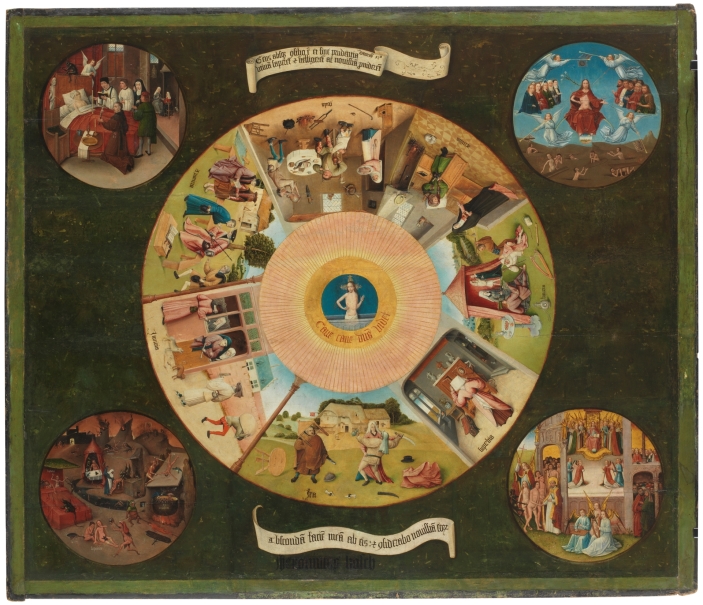
Pokorny 2010c
“Die sogenannte Tischplatte mit den Sieben Todsünden und den vier letzten Dingen” (Erwin Pokorny) 2010
[in: Frühneuzeit-Info, vol. 21 (2010), nrs. 1-2 (Sonderband ‘Die Sieben Todsünden in der Früher Neuzeit’), pp. 35-43]
Pokorny offers a meticilous iconographical description of the different parts of the Prado Seven Deadly Sins panel, occasionally adding a personal interpretation. The figures in the Gula segment, for example, are considered a family of false beggars. The author does not believe the panel was meant as a tabletop. Why the painter gave the Ira segment such a prominent place, remains uncertain. Possibly, the commissioner preferred it that way. Quite unique and new is the idea to represent to omnipresent Eye of God by means of the cave cave deus videt line and the iris-like circle of rays. Pokorny thinks that Felipe de Guevara’s attribution of this panel to an anonymous discipulo of Bosch is plausible, and he suggests a dating between 1495 and 1520. The painting was not executed on cypress wood, as Vandenbroeck assumed in 2002, but on black poplar wood (according to Garrido/Van Schoute 2001).
[explicit 22nd May 2020]